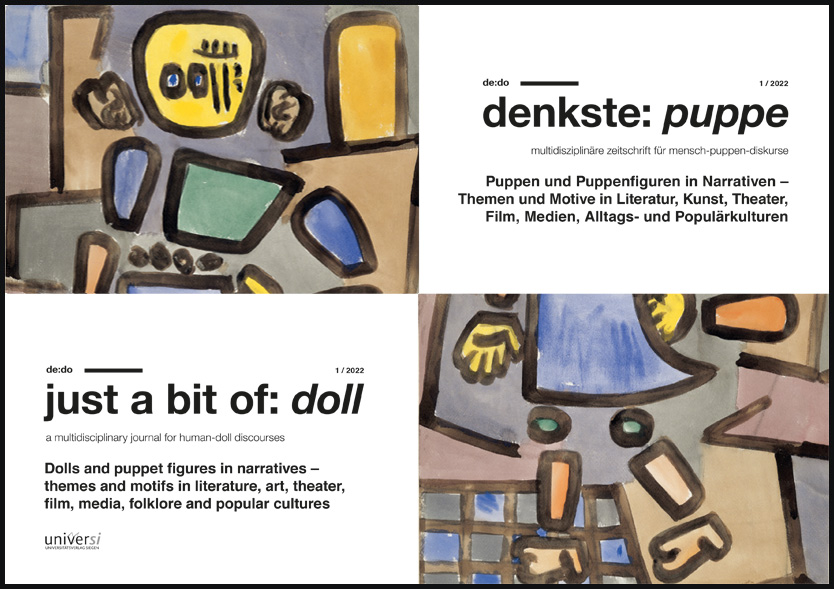Alterity as a Narrative of the Doll. Self-Assurance and Release from Gender Role Clichés in Play with Dolls/Puppets
DOI:
https://doi.org/10.25819/dedo/128Keywords:
alterity, affordance, performative potential, gender rolesAbstract
Dolls/puppets as anthropomorphic beings invite human beings to interact with them. If doll and human meet, the doll/puppet creates an incentive for action in the sense of a doll-specific affordance, which stimulates the inner-psychic interplay of identity and alterity in the human counterpart. In the paper it is argued that alterity is situationally inscribed in the doll/puppet as a psychological narrative: the doll is perceived as alter that correlates with an awareness of ego. It is an alterity offered by the doll with a performative potential for the human counterpart. The coincidence of alterity narrative (on the part of the doll) and new self-assurance (on the part of the human) is also found in literary texts. Using the example of two stories – An Emigrant (1914/1930) by Selma Lagerlöf and Popp and Mingel (1960) by Marie Luise Kaschnitz – these considerations are explored: Two adolescent boys take up the doll's narrative of alterity as a potential for differentiating their self-concept, which leads to their being able to release themselves from gender role clichés for a certain time.
Downloads
Published
How to Cite
Issue
Section
License
Copyright (c) 2022 Prof. Dr. Insa Fooken

This work is licensed under a Creative Commons Attribution-ShareAlike 4.0 International License.



